Sinheungsa Temple (Seoraksan Mountain) (신흥사(설악산))
10.3Km 2024-03-12
1137 Seoraksan-ro, Sokcho-si, Gangwon-do
+82-33-636-7044
Sinheungsa Temple is a temple located in Seoraksan Mountain near Sokcho. It belongs to the Jogye Order of Korean Buddhism. It was originally founded as Hyangseongsa Temple by the monk Jajang in the Shilla dynasty (A.D. 652). Within the temple grounds, cultural heritage sites such as Geungnakbojeon Hall, a wooden structure from the mid-Joseon period, and the Three-story Stone Pagoda at Hyangseongsa Temple Site. The temple offers a templestay program where visitors can experience temple life firsthand. Participants can engage in various activities such as Buddhist ceremonies, Buddhist prayer, 108 prostrations, and lotus lantern and rosary making.
Seoraksan Ulsanbawi Rock (설악산 울산바위)
11.7Km 2024-02-28
1091 Seoraksan-ro, Sokcho-si, Gangwon-do
+82-33-680-3382
Ulsanbawi is a rock formation in Seoraksan Mountain that consists of six massive peaks, each reaching 900 meters above sea level. The name "Ulsanbawi" is derived from the shape of the peaks, which spread out like a fence, and it is located at the center of Seoraksan Mountain. This rock is celebrated for its unique shape, the scenic beauty surrounding it, and its hiking trails. It takes about three hours to reach the top of Ulsanbawi from Sogongwon Park.
Ulsanbawi Rock Milky Way Photo Spot on Old Misiryeong Trail (미시령옛길 울산바위 은하수)
11.9Km 2024-03-18
5110 Donghae-daero, Toseong-myeon, Goseong-gun, Gangwon-do
Misiryeong Pass, historically a pathway connecting Inje to Sokcho, also serves as an observation point for viewing Ulsanbawi Rock in Seoraksan Mountain. More recently, it has gained popularity as a photo spot for capturing the Milky Way. As a result, on clear nights, the parking lot is often filled with eager photographers.
Songjeonhaebyeon Beach (송전해수욕장)
12.0Km 2024-02-05
21-7 Songjeon-ri, Sonyang-myeon, Yangyang-gun, Gangwon-do
This beach ranks among Korea's most favored surfing destinations. With its pristine white sand, it stretches 900 meters in length and 80 meters in x_width, and has a depth of 1 meter. It holds the distinction of being the second largest and longest white sand beach in Yangyang-gun, following Naksanhaebyeon Beach. Notably, the water here is so clean and clear that visitors can enjoy clamming.
Goseong Hwaamsa Temple (화암사(고성))
12.1Km 2024-10-28
100 Hwaamsa-gil, Toseong-myeon, Goseong-gun, Gangwon-do
Hwaamsa Temple was built during the Silla period, and then repaired many times throughout history, with the temple even moving locations to where it is now in 1864. The current structures were built in 1991 for the World Jamboree. The temple name also changed throughout history, with the current name being given in 1912. The temple is located in a pristine natural environment, and is home to a traditional tea house, making it a great place to relax and feel at peace.
Yettteul (옛뜰)
12.3Km 2024-02-16
289 Dongmyeong-ro, Sonyang-myeon, Yangyang-gun, Gangwon-do
033-672-7009
Yettteul has been serving traditional gamasot sondubu (handmade bean curd cooked in a cast-iron pot) and wild-caught seop guk (mussel soup) for over 30 years. In Gangwon dialect, 'seop' refers to mussels. Their seop guk, a hangover soup, is made with seop (mussels), mushrooms, chives, green onions, and eggs, all simmered in a broth prepared with aged soybean paste and red chili paste. For those looking to explore the area, the restaurant is conveniently located near tourist attractions such as Songjeon Beach and the Osan-ri Prehistoric Site.
Nogwon Galbi (녹원갈비)
12.5Km 2018-10-24
60, Geomacheon-ro, Yangyang-eup, Yangyang-gun, Gangwon-do
+82-33-671-2325
Nogwon Galbi is a restaurant specializing in galbi (grilled pork ribs). The restaurant serves only the freshest pork ribs, coming in regular and marinated in a special seasoning made in-house. The meal comes accompanied by eight tasty side dishes and doenjangjjigae (soy bean paste soup) made from housemade soy bean paste.
Baekchon Makguksu (백촌막국수)
12.5Km 2024-12-10
Baekchon Makguksu is a one of the most well-known restaurant in Goseong for serving delicious makguksu (buckwheat noodles), a dish that defines Gangwon-do. Buckwheat noodles in Baekchon Makguksu are served with a dried pollack salad, which, for many regulars, is the thing that makes them come back for more. Baekchon Makguksu’s take on this dish combines the flavors of dongchimi (radish water kichmi) broth with Hamheung-style cold buckwheat noodles. Ingredients consist of dongchimi and buckwheat noodles, topped with dried pollack salad, sesame oil, vinegar, sugar, mustard, and seasoning to taste. The noodles themselves retain the fragrance and the texture of buckwheat quite well. Visitors who prefer their bowl to have a more subtle yet refreshing taste can control the amount of vinegar and seasoning to bring the soup’s flavors forward. Another popular dish here is suyuk (boiled pork slices). After enjoying a meal of makguksu, visitors are recommended to take a leisurely seaside stroll at the nearby Munamhaebyeon Beach.
On the Button (온더버튼)
12.6Km 2024-12-27
On the Button is known for its view overlooking Munamhaebyeon Beach. The cafe’s facade features a window wall that brings the beach into view. The parking lot is located at the back of the cafe, so visitors won’t have to worry about cars blocking the view. With its chic interior and space, the cafe is also popular for photography. All beverages at On the Button are served in reusable cups. Lids are provided upon request. The second floor is a rooftop space. Children are prohibited from accessing the space due to safety reasons. The cafe serves a wide range of menu items, from Latte Verde to Summer Latte, Marron Latte, Cafe Americano, Latte, and Einspanner. Nearby tourist sites include Cheonhakjeong Pavilion, Baekdo Beach, and Gyoamri Beach.
Osan-ri Prehistory Museum (오산리선사유적박물관)
12.8Km 2021-08-11
33, Hakpo-gil, Yangyang-gun, Gangwon-do
+82-33-670-2442
Osan-ri Prehistory Museum is dedicated to preserving, researching, and exhibiting artifacts found in the Archaeological Site in Osan-ri, Yangyang. These artifacts, dating back to the Neolithic period about 8,000 years ago, were found over the course of public works on the museum’s surrounding wetlands. The collection of nearly 40,000 artifacts, include earthenware with a raised design, stone arrowheads, and net weights, represent one of the premier archaeological findings of the Neolithic period in Korea. The artifacts themselves speak to the fishing, hunting, and gathering activities of the Neolithic residents of Osan-ri. The museum is divided into indoor and outdoor exhibitions, storage, and research areas. Exhibition Hall 1, located indoors, offers a diorama of the Neolithic lifestyle in Osan-ri, such as fishing, gathering, and earthenware production. Exhibition Hall 2 introduces the prehistoric culture of the Yeongdong region, encompassing the periods from the Neolithic to the Iron Age in Yangyang, Goseong, and Gangneung. Outdoor Exhibition includes Neolithic cottage models, exploration paths, and Ssangho Wetlands, whose nickname of “the dancing reed bed” comes from the mysterious sight of the reed bed rising over the wetlands like an island, dancing to the winds.

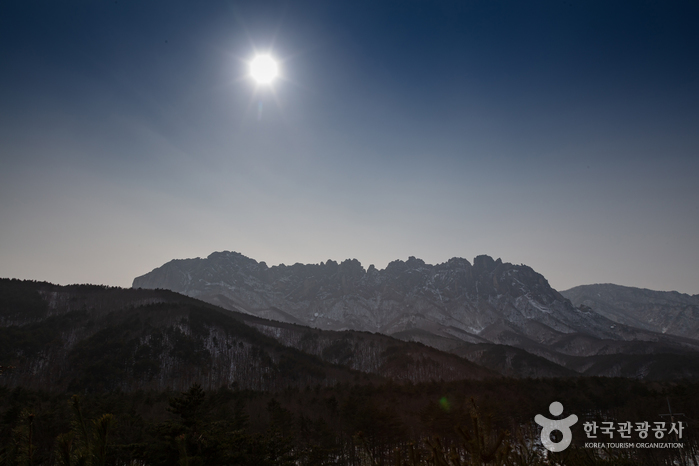
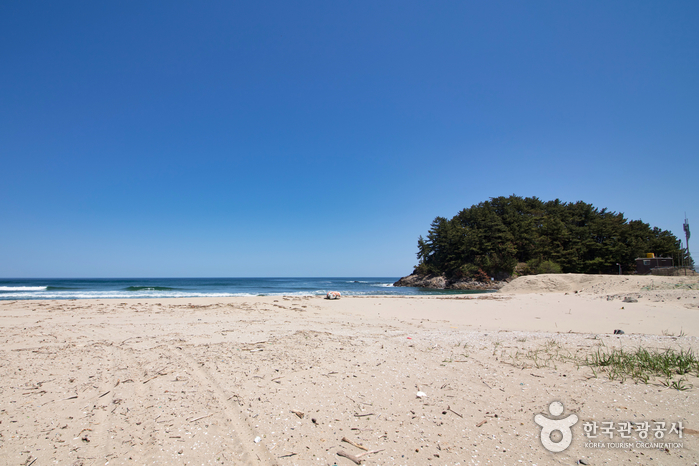
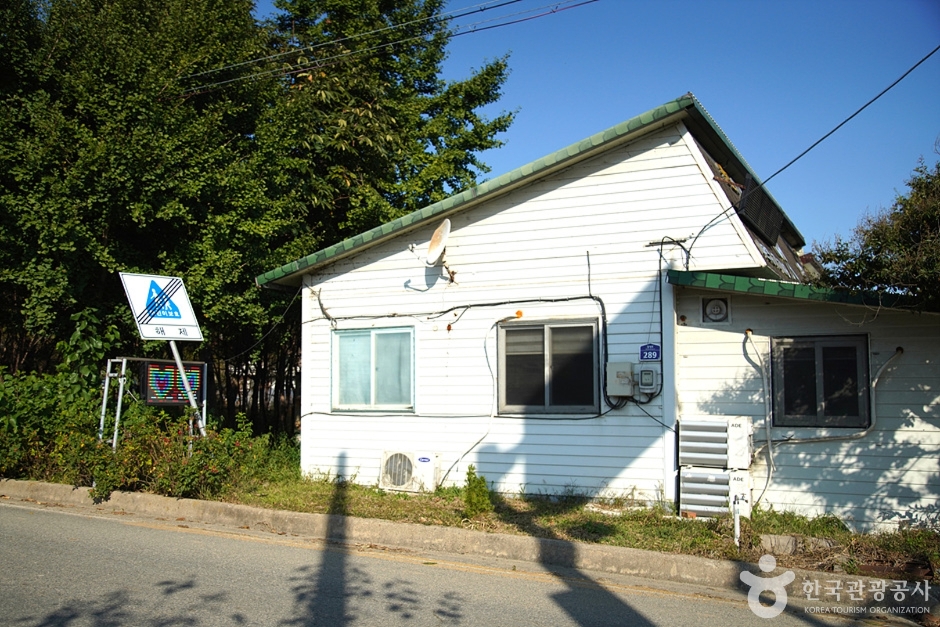
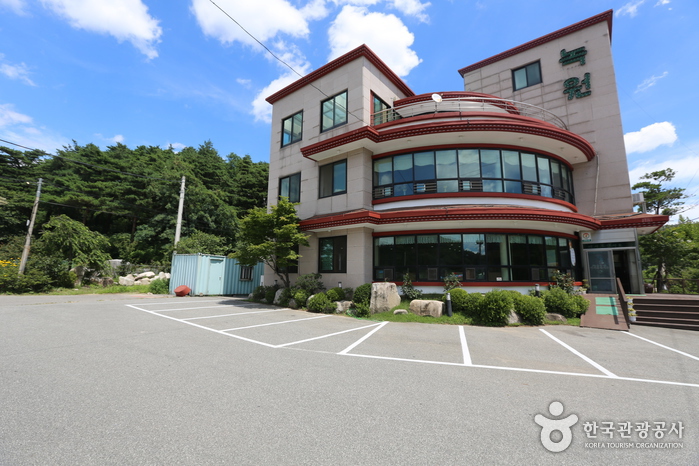
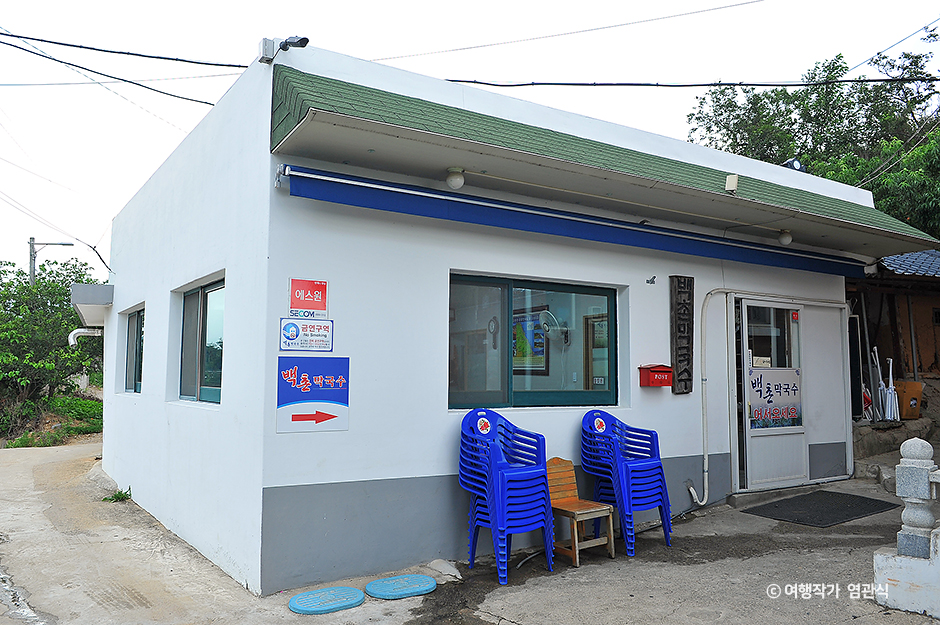
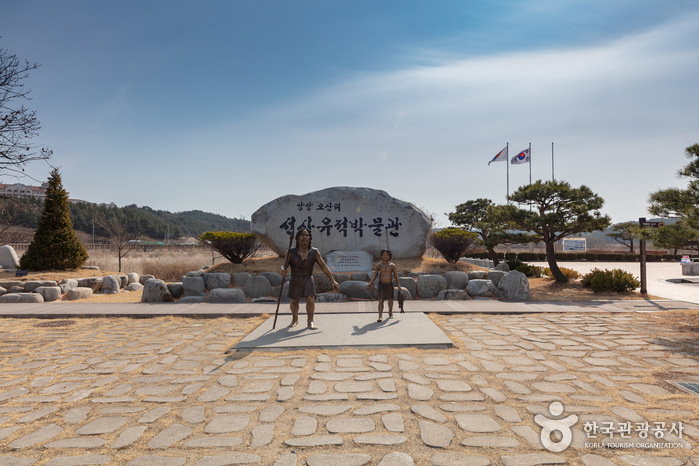
 English
English
 한국어
한국어 日本語
日本語 中文(简体)
中文(简体) Deutsch
Deutsch Français
Français Español
Español Русский
Русский